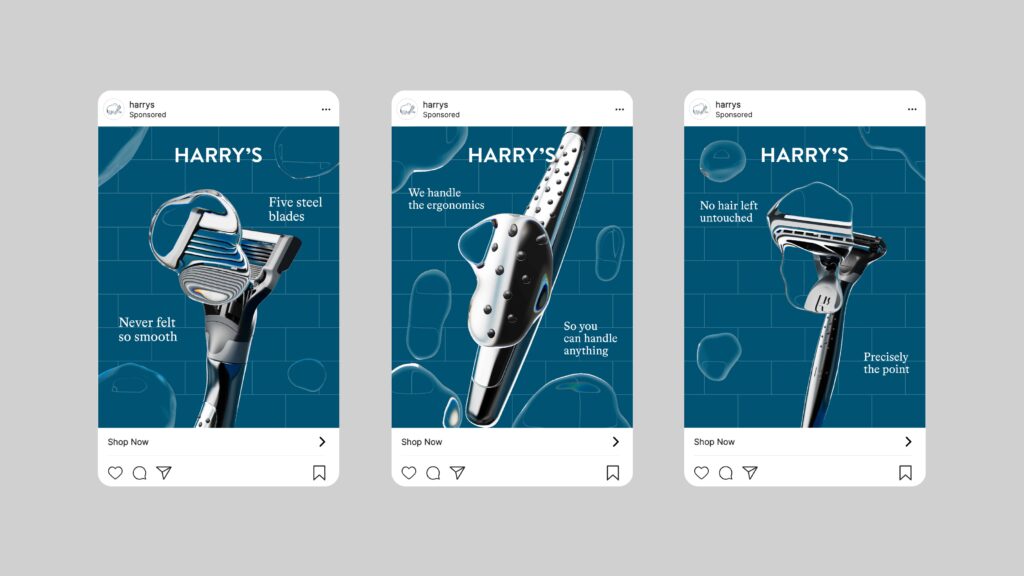
The Direct-to-Consumer Model – Owning the Experience
A crucial element in the Harry’s marketing case study is its DTC-first strategy. By skipping traditional retail and selling directly via their website, Harry’s controlled everything — pricing, messaging, packaging, and customer data.
Key Wins:
- Customer acquisition costs (CAC) were kept low with a viral referral program. Within a week of pre-launch in 2013, 100,000 emails were collected.
- They acquired a German factory, Feintechnik, to own their manufacturing — rare in the DTC space.
- Personalized packaging with the customer’s name created emotional stickiness.
- Subscription plans added convenience and long-term value.
The result? By 2017, Harry’s had captured 2% of the U.S. men’s razor market. That may sound small, but in a category so concentrated, it was massive.
The Brand Is the Product
Harry’s success isn’t just about supply chain innovation — it’s about emotional resonance.
They didn’t shout about blades. Instead, they told stories. From illustrations of barbershop nostalgia to emails signed by the founders, the brand felt warm, familiar, and modern.
Brand Values That Stuck:
- Simplicity: No jargon, no gimmicks — just good razors.
- Transparency: Upfront pricing and honest communication.
- Social impact: 1% of sales went toward men’s mental health, a cause often stigmatized and overlooked.
This approach birthed loyalty beyond utility. Harry’s wasn’t a razor company. It was a modern men’s wellness brand.
Continue reading…
The next section explores the most dramatic pivot yet: Harry’s ventures beyond shaving — into skincare, deodorant, and even female-centric brands.


